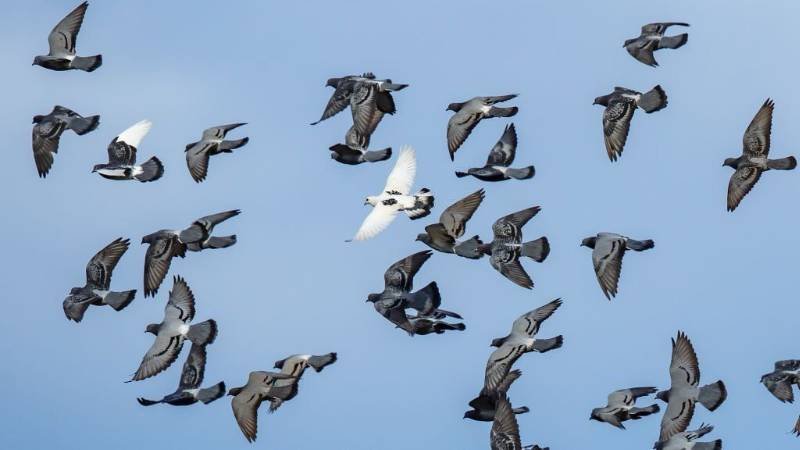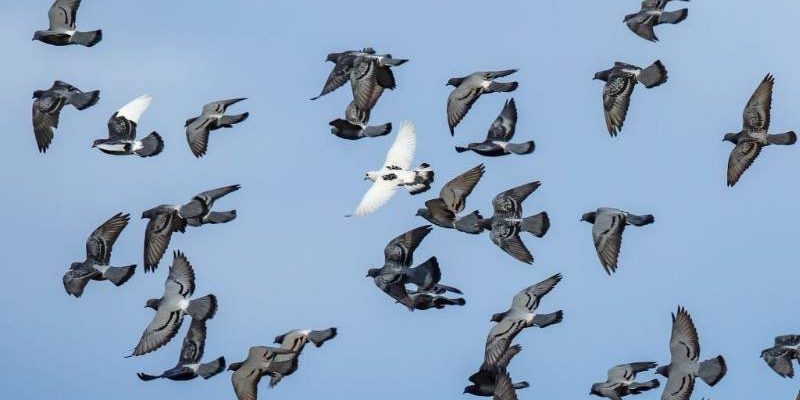
Pigeons, especially the rock pigeon, are known for their acrobatic flight patterns and remarkable sense of direction. Have you ever noticed how they can zip around without a second thought? This article aims to peel back the layers of their unique flying and hunting techniques, making it easier to appreciate these seemingly simple birds. You might be surprised to learn just how sophisticated they really are!
Understanding Pigeon Flight Mechanics
Pigeons are like the NASCAR drivers of the bird world. Their bodies are perfectly adapted for speed and agility. With a streamlined shape, they can reach astonishing speeds of up to 60 miles per hour! Let’s break down how they manage all this.
Wing Structure and Functionality
Pigeons have long, pointed wings that allow them to maneuver sharply and quickly. Their wing muscles are incredibly strong, providing the power to take off, hover, and glide effortlessly. When pigeons want to gain speed, they flap their wings rapidly, almost like they’re hitting the gas pedal. But when they want to slow down or make quick turns, they spread those wings wide, catching the air and adjusting their direction.
Aerodynamics in Action
Here’s the thing: Pigeons make use of aerodynamics—the science that explains how air flows around objects. By adjusting the angle of their wings, they can create lift, which helps them rise into the air. They can also shift their center of gravity, allowing for those sharp turns and quick descents. This ability to adjust is key to their success as both flyers and hunters.
Pigeons and Their Unique Hunting Techniques
Pigeons are not just pretty fliers; they’re skilled foragers as well. Their hunting techniques are something to marvel at. Rather than swooping down at high speed, they employ a clever, methodical approach to finding food.
Visual Acuity and Foraging Skills
Pigeons possess outstanding vision, capable of detecting colors we can’t even see. This helps them spot seeds and grains from great distances. When they hunt for food, they often do so in groups, which increases their chances of locating a meal. They may hop around, pecking at the ground, using their excellent eyesight to scan for edible morsels.
Social Dynamics in Hunting
You might be wondering how social behavior plays into their hunting success. Pigeons often rely on social foraging. This means they work together to find food, sharing information about where to locate it. By watching where other pigeons go, they can be more efficient in their hunting efforts, making it a team sport rather than a solo mission.
How Pigeons Use Their Environment
Pigeons are masters at adapting their hunting techniques based on their environment. Whether they’re in a bustling city or the countryside, they change their strategies to maximize food intake.
Urban vs. Rural Hunting Techniques
In urban settings, pigeons often scavenge for food left by humans—think breadcrumbs or leftover fries. They’ve learned to navigate busy streets and crowded parks like pros. In contrast, rural pigeons hunt more traditionally, looking for seeds and berries in fields and forests. Their ability to switch between these techniques showcases their intelligence and adaptability.
Using Landmarks for Navigation
Another fascinating aspect of how pigeons operate is their exceptional sense of direction. They can find their way home over long distances, thanks to their ability to recognize landmarks and even use the Earth’s magnetic fields. Imagine having a built-in GPS system! When searching for food, they often return to familiar spots, where they know they can find a reliable meal.
The Role of Instinct in Pigeon Behavior
While intelligence plays a major role in how pigeons hunt, instinct is also a significant factor. These birds rely on their natural behaviors to survive and thrive.
Innate Hunting Behaviors
From a young age, pigeons learn essential hunting behaviors from their parents. They observe and mimic their mothers and fathers as they forage, picking up tips and tricks along the way. This instinctual knowledge becomes essential for survival, helping them discover what to eat and where to find it.
Instinct vs. Learning
Here’s the kicker: while instincts guide them, pigeons are also capable of learning from experience. If a particular food source becomes scarce, they can adapt and search for alternatives. This blend of instinct and learning is what makes them so successful hunters.
The Flight Patterns of Pigeons
Pigeons exhibit a variety of flight patterns that are not only fascinating to observe but also serve specific purposes in their daily lives.
Straight and Steady vs. Quick and Erratic
When pigeons need to get somewhere fast, they tend to fly in steady, straight lines. This method is great for covering distance in a hurry. But when it comes to dodging predators or navigating through urban environments, they switch to erratic and unpredictable movements. Think of it like dodging traffic—quick, agile maneuvers are essential for survival.
Migration Behaviors
Some pigeon species migrate seasonally, flying long distances to find food and suitable breeding grounds. During migration, they often fly in V formations, which helps them conserve energy. By flying in this formation, each bird benefits from the reduced air resistance created by the bird in front of it. It’s teamwork at its finest!
The Impact of Weather on Pigeon Flight
Weather conditions can significantly influence how pigeons fly and hunt. It’s essential to understand these impacts, as they can affect their behavior and feeding opportunities.
Wind and Flight Mechanics
Strong winds can either aid or hinder a pigeon’s ability to fly. Tailwinds can give them a speed boost, allowing them to cover distance quickly, while headwinds can make flying more challenging. Pigeons often adjust their flying techniques based on wind conditions to maximize efficiency and safety.
Rain and Foraging Behavior
Rainy weather doesn’t stop pigeons; it often changes how they hunt. While some birds might seek shelter, pigeons will often continue foraging. They may be more cautious, using covered areas to peck for food without exposing themselves to the elements. It’s all about adapting to their surroundings!
Pigeons are remarkable creatures, showcasing unique flying and hunting techniques that truly set them apart in the bird world. From their impressive mechanics of flight to their clever hunting strategies, there’s much more to these birds than meets the eye. So, the next time you see a pigeon soaring through the air, remember the incredible skills and adaptations that make them such fascinating animals.
Through their speed, agility, and social behaviors, pigeons remind us that even the most common species can have extraordinary abilities. They adapt skillfully to their environments, proving that survival often hinges on a mix of instinct, intelligence, and teamwork. Whether they’re dodging predators or searching for food, pigeons embody resilience and resourcefulness in the natural world.

